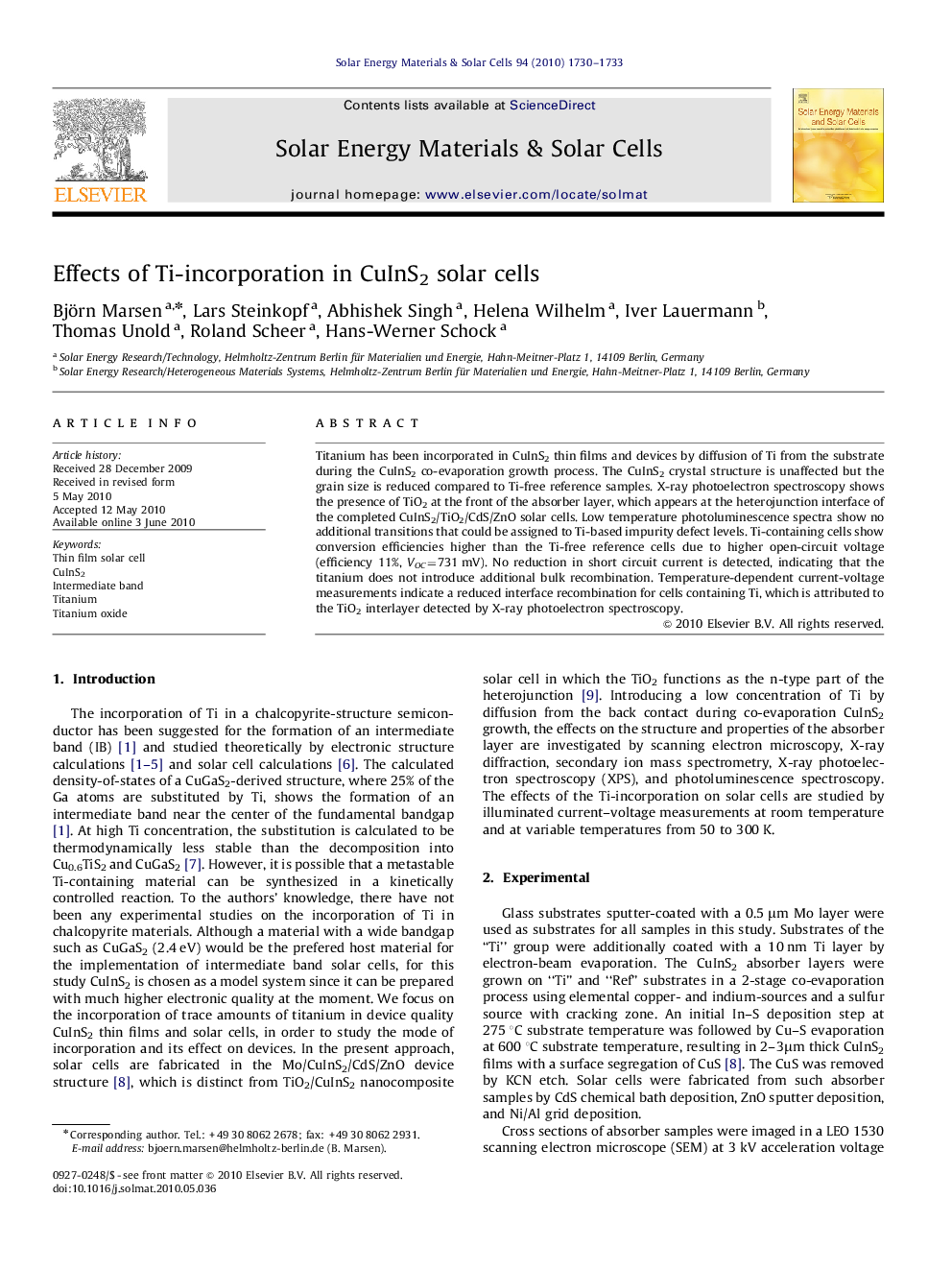| Article ID | Journal | Published Year | Pages | File Type |
|---|---|---|---|---|
| 79530 | Solar Energy Materials and Solar Cells | 2010 | 4 Pages |
Titanium has been incorporated in CuInS2 thin films and devices by diffusion of Ti from the substrate during the CuInS2 co-evaporation growth process. The CuInS2 crystal structure is unaffected but the grain size is reduced compared to Ti-free reference samples. X-ray photoelectron spectroscopy shows the presence of TiO2 at the front of the absorber layer, which appears at the heterojunction interface of the completed CuInS2/TiO2/CdS/ZnO solar cells. Low temperature photoluminescence spectra show no additional transitions that could be assigned to Ti-based impurity defect levels. Ti-containing cells show conversion efficiencies higher than the Ti-free reference cells due to higher open-circuit voltage (efficiency 11%, VOC=731 mV). No reduction in short circuit current is detected, indicating that the titanium does not introduce additional bulk recombination. Temperature-dependent current-voltage measurements indicate a reduced interface recombination for cells containing Ti, which is attributed to the TiO2 interlayer detected by X-ray photoelectron spectroscopy.
